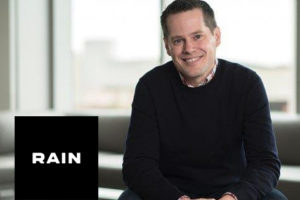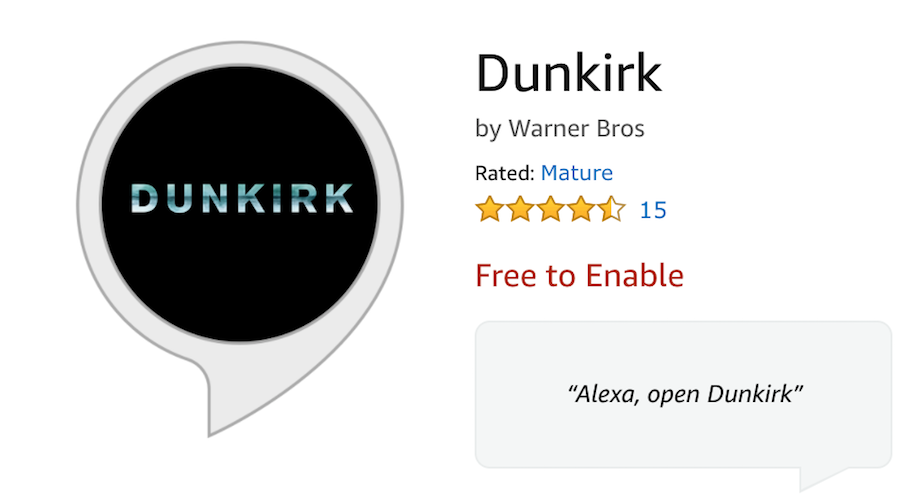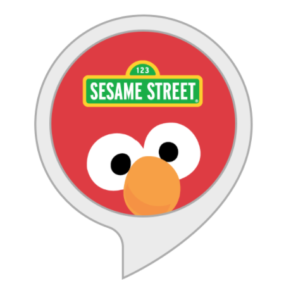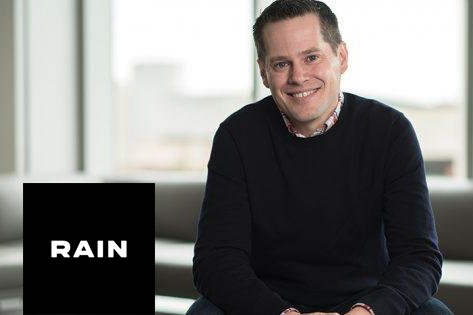What RAIN Learned from 30 Alexa Skill Launches
 RAIN is a digital consultancy with offices in New York, Utah and Nicaragua and was one of the earliest developers on the Alexa platform. Greg Hedges is RAIN’s Vice President of Emerging Experiences and has spent 12 years focused on what he calls audience engagement ecosystems. One of those ecosystems where RAIN has considerable experience is Amazon Alexa. Greg notes that RAIN has built over 30 Alexa skills for leading brands such as Campbell’s, Tide and the NFL. The firm has also worked with numerous entertainment properties including the movie Dunkirk, Star Trek and Sesame Street. Voicebot connected with Greg to learn more about the agency’s work in voice and what they have learned from their many projects.
RAIN is a digital consultancy with offices in New York, Utah and Nicaragua and was one of the earliest developers on the Alexa platform. Greg Hedges is RAIN’s Vice President of Emerging Experiences and has spent 12 years focused on what he calls audience engagement ecosystems. One of those ecosystems where RAIN has considerable experience is Amazon Alexa. Greg notes that RAIN has built over 30 Alexa skills for leading brands such as Campbell’s, Tide and the NFL. The firm has also worked with numerous entertainment properties including the movie Dunkirk, Star Trek and Sesame Street. Voicebot connected with Greg to learn more about the agency’s work in voice and what they have learned from their many projects.
How did you first get into voice?
 We were working with Campbell’s on a strategy project related to Campbell’s Kitchen. It was about a house for all of their brands, a recipe platform. Then the news came out that Amazon Alexa was opening up for developers. That led to the concept of using Campbell’s as a coach in the kitchen and thinking through the ability to give consumers an answer instead of typing into Google and getting a thousand options. The Campbell’s team gave the green light to the project.
We were working with Campbell’s on a strategy project related to Campbell’s Kitchen. It was about a house for all of their brands, a recipe platform. Then the news came out that Amazon Alexa was opening up for developers. That led to the concept of using Campbell’s as a coach in the kitchen and thinking through the ability to give consumers an answer instead of typing into Google and getting a thousand options. The Campbell’s team gave the green light to the project.
While we hadn’t worked on a voice project of that nature before, we thought through all of the different ways we could use it. There were only about 30 skills on the platform at the time.
What is your background?
My background was in design and UX. I wrote the scripts and user flows [for the Campbell’s Alexa skill] and did the planning that is now part of our process.
What surprised you most about Campbell’s project?
How important the planning process was. Everyone needed to be at the table in the beginning. The process is more planning than development. If you do it right, it is more than half of the project.
The strategy part is important as well to make sure you are doing something of value. You want to make [the skill] simple, seeding the conversation but not giving people too many choices. We are finding ways to bring people back. They are not one-offs with consumers. Campbell’s was a lesson learned. They were very into it at the beginning but there was time in between and things were unaddressed. So, it was a little neglected. That was later addressed.
It is a product-based mentality. It’s not a campaign, although we have seen it used that way. We see voice as a channel that will be important to all digital marketers.
What happened when you launched?
In Oct 2015 there was a lot of buzz. We saw waves of adoption in gift giving season. Recipes are an important area for consumers and they are looking for names that they recognize. It was right around the holidays so we had recipes for Thanksgiving, Christmas, Kwanza. People were using the skill. We were getting a lot of data.
We definitely saw drop off in early 2016. We did an update in the winter of last year [to add] stepping through cooking steps one-by-one. And, we started looking at more categories. There were only about 500 recipes [in the original skill] and there are thousands on the full website and app. We figured out how to open up to all categories.
Tell me about Campbell’s on Echo Show.
We knew we wanted to have a cooking experience with visuals. Along the way we learned about the Echo Show. It was great to make an update to include the Echo Show and in July, that experience launched. It got a lot of feedback and we are using Google Analytics and VoiceLabs to track the data.
When the Campbell’s Alexa skill launched it was one of few options. Now there are tens of thousands of skills. How do you approach skill discovery differently?
Finding a skill can be somewhat challenging in the skill store. You have to look at paid, earned, and owned [promotion strategies]. We have used Facebook and Twitter for some brands. You can use Google Adwords to drive to a microsite.
I noticed you did the skill for Safeco Insurance. Why were so many insurance companies on Alexa so early?
Insurance is something that is a mystical process. It is something you don’t understand and don’t think about until you need it. Also, with insurance companies there are innovation areas that are looking to explore new technologies that represent new ways to connect with consumers. Safeco has a new customer acquisition focus. Others are looking at customer service applications.
What did you learn working on the Safeco Alexa skill?
This skill was about making sure that you are sustaining the conversation. That is something we learned there. We didn’t have anyway of getting back to the user to draw them back into the skill after their initial interest. The design was about making sure you have a way to connect people and thinking about the audience. In this case, Safeco was targeting new customers. It was about making sure you are getting out in front of people and making sure you are using paid channels to draw people in.
What about Tide?
That was about learning to deliver information to consumers. How do you get information to people the way they need it when they need it? If you provide your phone number, we can text the information to you. [The Tide Alexa skill] is simple, with tips. If you are going through multiple steps it can get long. The text solution helped with that.
Tell me about Dunkirk and interactive story telling through an Alexa skill.

Dunkirk led to Star Trek and we’ve had conversations related to other entertainment properties. We dug in there. Alexa is sometimes a good personality to speak with and sometimes you want a more immersive experience. We scripted out the story [for Dunkirk] and had it all recorded by a voice actor. We also addressed several questions:
- How can you create a world that is hosted by Alexa but narrated by an actor?
- How can you create an experience that goes beyond the movie experience?
- What else do we need to add such as the graphics?
I also noticed you launched the Sesame Street Alexa skill. That includes parental consent because it is designed for children. What did you learn from that?
 A lot of the parental consent processes we don’t have to handle. That is all handled on the Amazon side. So, for us it was about how people are using it much like any other skill we were doing.
A lot of the parental consent processes we don’t have to handle. That is all handled on the Amazon side. So, for us it was about how people are using it much like any other skill we were doing.
What do brands need to know about working with voice?
Make sure they understand it’s a journey. You need to set forth a strategy to engage with new and existing audiences. When you bring in a new technology they just throw out ideas. Make sure you are designing something that is on-brand and on-strategy and rolls up into your overall strategy. Setting up a roadmap with a crawl-walk-run strategy is important. Where do we want to go with this today and how is it going to evolve? How can we make this something that users want to re-engage with? We have been very happy with this approach.
What was your initial impression when you first learned about Alexa?
I was immediately excited and hoped everyone else would be too. I believe it was informed excitement. The rate of growth has been interesting. If you told me when we put out our skill in the first 50 that now there would be over 25,000, that would have been hard to believe.
How has your thinking evolved about voice technologies?
A couple of years ago I would have told you it will be a one assistant world. Seeing all of the the partnerships now, maybe this will be a world where we use assistants based on their strengths.
Amazon Moves Closer to Enabling Notifications for Alexa Skills
Amazon Alexa and Google Home Are Changing Consumer Habits According to Dashbot Survey









